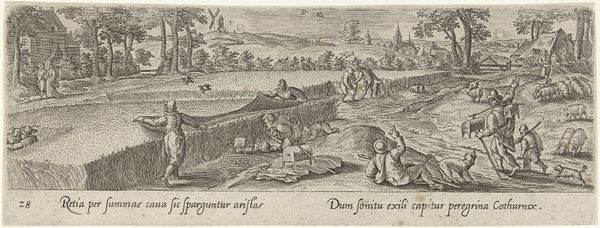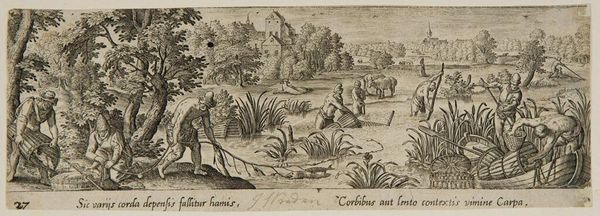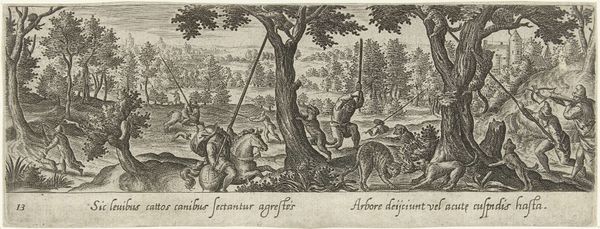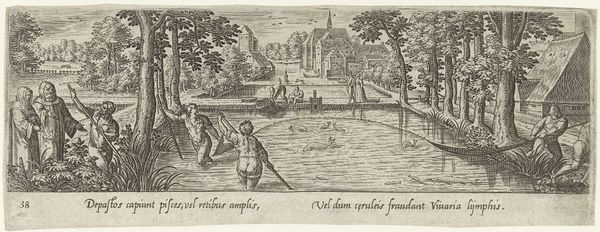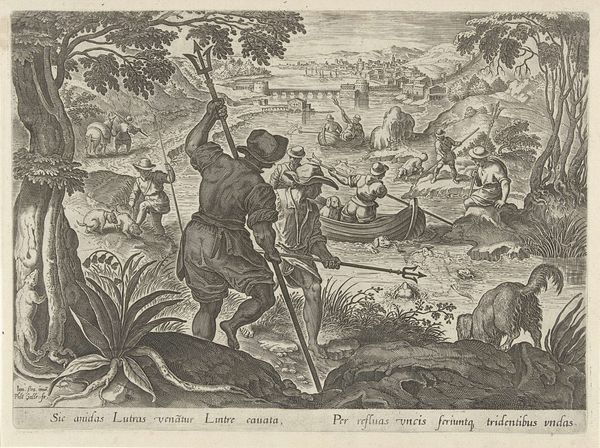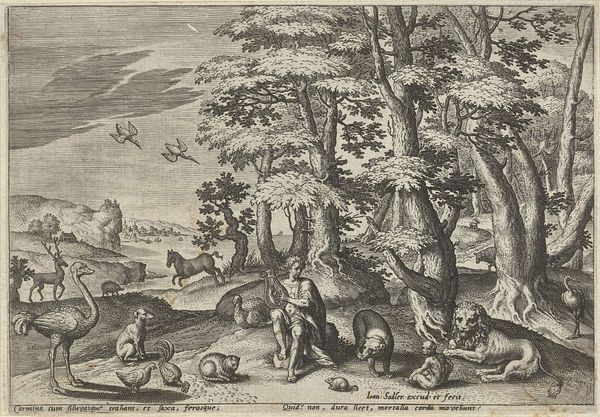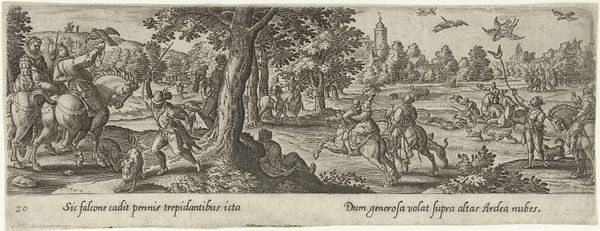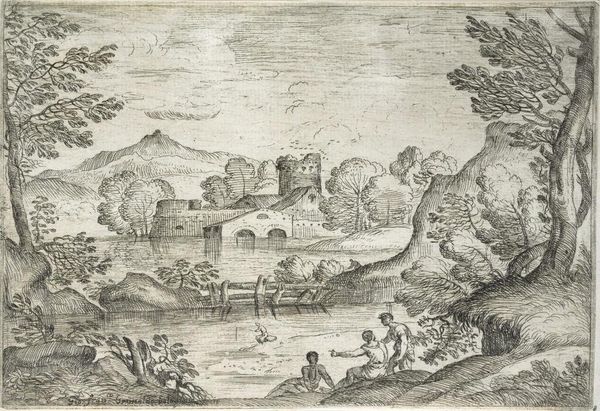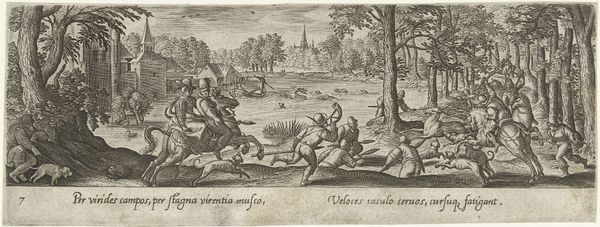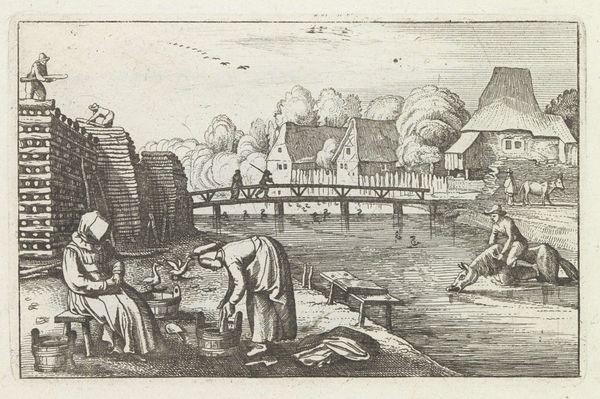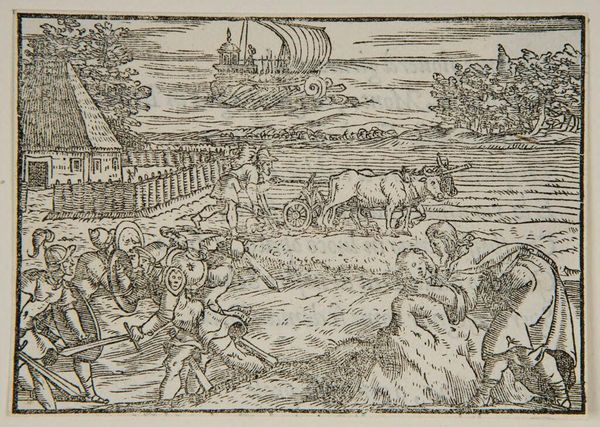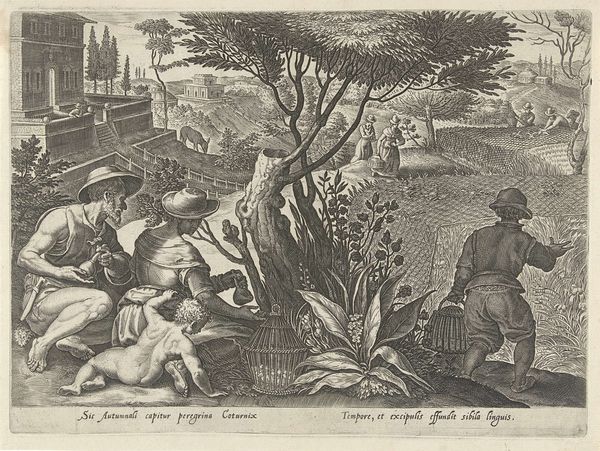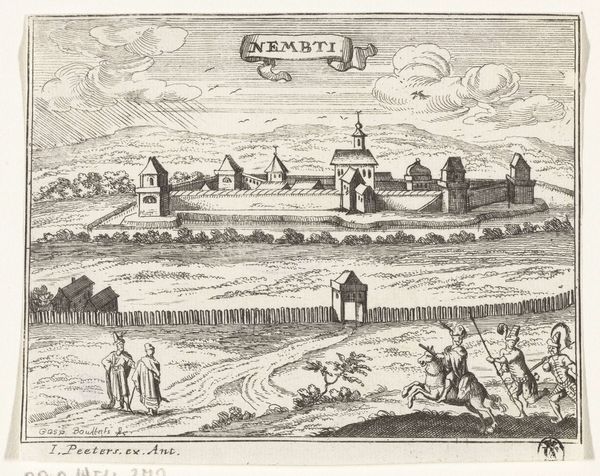
print, engraving
#
dutch-golden-age
# print
#
pen sketch
#
landscape
#
genre-painting
#
engraving
#
realism
Dimensions: width 215 mm, height 81 mm
Copyright: Rijks Museum: Open Domain
Curator: "Visvangst met fuiken en vislijnen," or "Fishing with Fykes and Fishing Lines," attributed to Philips Galle and created sometime between 1582 and 1633. You can find this detailed engraving at the Rijksmuseum. Editor: The initial feeling I get is one of industriousness, and also tranquility. Despite the busy scene, the monochromatic engraving conveys a peaceful coexistence between man and nature. Curator: The magic of Galle's print lies in its capacity to showcase a comprehensive vision of labor and leisure within the Dutch Golden Age. You observe the fishermen using their nets and lines; these scenes underscore the complex interaction with natural resources and highlight human labor's presence within that landscape. The very act of engraving demanded specific skills; the material reality is not just the scene of fishing but its physical manifestation through ink and paper as items for consumption and trade. Editor: I am captivated by the composition’s layering; note the way the scene recedes, framed by the trees in the foreground leading to the architectural elements of the buildings set amidst that meticulously hatched background. I appreciate the tonal qualities that contribute to the sense of depth and recession within the scene, creating almost a microcosm of a society through pictorial means alone. Curator: It prompts thinking about social structure; how are we to interpret these displays of everyday people as emblems of emerging consumer culture and expanding economic systems? Were these scenes consumed differently amongst varied societal ranks and their evolving sensibilities around labor? Editor: Right! Because by its intrinsic qualities— the light, detail and textures so acutely created from hatching of engraving marks — it is an immersive pictorial world that carries one away. From this vantage, you almost become part of the depicted scene. Curator: Thinking beyond the form, these prints like so many created around this period, reveal as much about those working the material processes and tools as they can inform our awareness of a burgeoning modern economy built through visual reproduction across shifting levels of society! Editor: And yet in terms of just close, sustained, visual attention, its structure, materiality, tonal relationships also reveal some immutable pictorial principles. Thanks to that, and after our discussion, one may begin to think differently. Curator: Indeed, this journey beyond art is only just starting, so we may truly appreciate just how art always makes us work!
Comments
No comments
Be the first to comment and join the conversation on the ultimate creative platform.
